PinotFile: 9.27 July 22, 2013
|
Hanzell: Still Quality, Character and Reverence After 50 Years
The quote above came to me in a packet recently from Hanzell and although there was no attribution, it was clear that this was a reference to the long time Winemaker, now Winemaker Emeritus at Hanzell, Bob Sessions. Sessions was born in Southern California and was first introduced to the world of fine wine while a student studying English literature at University of California at Berkeley. A summer motor scooter trip with a close friend through France opened his eyes to the profession of winemaking, fine wine, and fine dining. Seven years after graduating from Cal, Sessions took a position as manager and winemaker at Mayacamas Vineyards located at the top of Mount Veeder. It was during his time at Mayacamas that Sessions first met a co-worker, Bradford (Brad) Webb, who became the founding winemaker at Hanzell Vineyards. Sessions is credited with producing renown Cabernet Sauvignons at Mayacamas Vineyards from 1968 to 1971. In early 1972, Sessions left Mayacamas Vineyards to become the production manager at Souverain Cellars in Rutherford (now the site of Rutherford Hill Winery). It was at Souverain that he gained a preference for small, family operated wineries. While assisting Warren Winiarski with the opening of Stag’s Leap Wine Cellars, Sessions was approached by Brad Webb to interview for the position of winemaker and general manager of Hanzell Vineyards. He welcomed the opportunity and assumed the role of Winemaker and General Manager of Hanzell Vineyards in 1973.
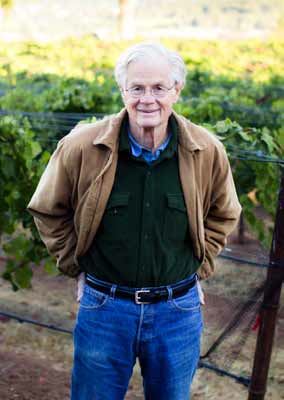 Sessions was the winemaker at Hanzell Vineyards for nearly 30 years. “Such long continuity is one of the things that make us different from other wineries,” he says. “We inherited a standard of ingrained quality and commitment to maintain not just the special taste and smell of the wines, but the breadth, depth and length of the overall quality.” Current proprietor, Alexander de Brye, has worked closely with Sessions since acquiring the winery in 1975 to maintain the standards that were established decades ago by the winery’s founder, Ambassador Zellerbach. Zellerbach, who planted the first vines at Hanzell in 1953 (old Wente clone Chardonnay and Martin Ray Pinot Noir), had the foresight to commit to Chardonnay and Pinot Noir at a time in California when very few wineries were producing wines from these two varieties. In 2002, Sessions retired and assumed the role of Winemaker Emeritus, passing on his knowledge and experience to the winemakers that have followed, including current Winemaker Michael McNeill, only the fifth winemaker in the estate’s history. Sessions maintained the “Hanzell house style” developed by Brad Webb, and never succumbed to the oaky, buttery style of California Chardonnay, or the highly extracted, ripe and fruit driven style of California Pinot Noir, both of which became so popular over the last twenty years. The “Hanzell way” emphasis restraint, nuance, food compatibility, and above all, age ability. The wines speak of the unique terroir of the Hanzell hillside estate, blessed with a concentration of Red Hill volcanic soil rarely founded in Sonoma County, and cooling maritime winds from the Petaluma gap. At Hanzell Vineyards, the emphasis is on the vineyard and not the winemaker who is but a shepherd of the Hanzell tradition. The current winemaker, Michael McNeill, told me, “I don’t want my fingerprints on the wines.”
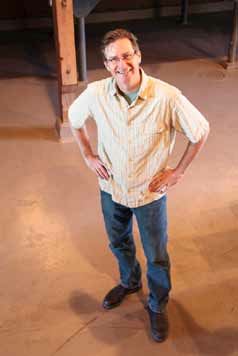 Sessions had a steadfast commitment to St. George rootstock and this has kept the estate safe from phylloxera. His belief in rigorous pruning vine by vine kept the quality of fruit at a high level on the estate. His ability to create wines that could be cellared for decades is rare. The most notable milestones for Bob Sessions are listed below. 1973: He becomes only the third winemaker in Hanzell Vineyards’ history. 1976: Sessions plants five acres of the de Brye Vineyard to Cabernet Sauvignon, Merlot, Cabernet Franc, Petite Verdot and Malbec. The remaining eight acres are planted to Old Wente Chardonnay clone on St. George rootstock and Mt. Eden clone Pinot Noir on St. George rootstock. 1983: He installs drip irrigation in every vineyard, recognizing that drought was inevitable. Visionary in his field, the drip system did not need to be used until 1996. 1974: Sessions begins experimenting with whole cluster fermentations for Pinot Noir. Abandoned for a time in the 1990s, McNeill has recently put it back in use after reflecting on the age ability of the older Pinot Noirs. 1993: Sessions grafts over the five acres of Bordeaux varieties in the de Brye Vineyard to Chardonnay and Pinot Noir. 1997: An additional eleven acres of vineyard was chosen, designed and installed by 2002 on the 200-acre estate. 1999: Sessions research led him to design a special 4.5-acre plot on the estate with eleven different rootstocks and clone combinations of Pinot Noir. Proprietor Alexander de Brye named the newly planted Pinot Noir block in Sessions’ honor. 2002: Sessions is named Winemaker Emeritus in January. A new winery development breaks ground. Sessions and Hanzell President Jean Arnold are married on October 19. 2004: Completed winery has eighteen custom made one-ton fermentation tanks and 500 linear feet of cave. The new “tankitos” replicate the quality and style of the original 1950s tanks designed by Ambassador Zellerbach. 2005: After 28 years, Sessions hands off his winemaking duties to Michael Terrien. 2008: Sessions oversees the planting of five acres of Chardonnay in the Zellerbach Vineyard that is named in honor of the original founder. McNeill joins the winery as winemaker. 2013: 2010 Hanzell Pinot Noir, Sessions Vineyard is released, celebrating Sessions’ 40th year with the estate, the first in a series of estate vineyard selections. The 200-acre Hanzell Vineyards property in Sonoma Valley includes 46 planted acres divided into six vineyards, and is home to the Ambassador’s 1953 Vineyard, the oldest continuously producing Chardonnay and Pinot Noir vines in North America (pictured below overlooking the town of Sonoma).
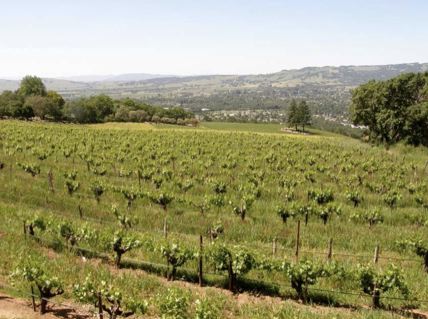
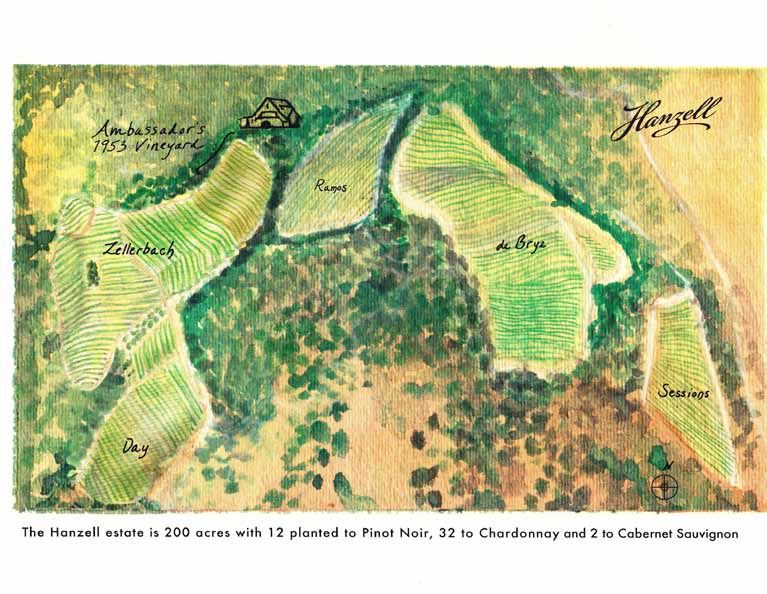
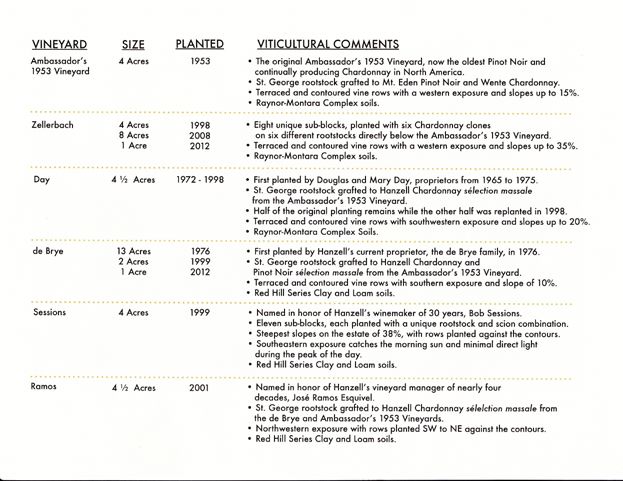 Hanzell Vineyards producing 6,000 cases annually, three-quarters of which is Chardonnay and one-quarter of which is Pinot Noir. All wines have been estate grown and produced since 1960. As dictated by tradition and the house style, the Hanzell wines have always been aged in Sirugue barrels, 50% new in the case of Pinot Noir and about 33% new for Chardonnay. The Sirugue barrels produced pure fruit expressions with smoky vanillin and fresh-baked bread aromas, and highlight tropical and lemon components. For Pinot Noir, the Sirugue barrels add finesse and subtle aromatics of exotic spices and roasted herbs. Beginning with the 2011 vintage, Hanzell is now working with seven different cooperages but is not planning to chance the overall style of the oak program. Hanzell Vineyards Chardonnay winemaking goes on as follows. The grapes are hand harvested in the cool of the morning. They are promptly brought to the winery and sorted again. Tradition dictates limited skin contact, carefully controlled inoculated fermentations, and a moderate use of new French oak. The 2010 estate Chardonnay was 30% barrel fermented, spending 12 months in 30% new French oak barrels and 6 months in bottle before release. Hanzell Vineyards “Sebella” Chardonnay is 100% stainless steel fermented and finished and aged 6 months in one to four-year-old French oak barrels. Hanzell Vineyards Pinot Noir winemaking goes on as follows. The grapes are 100% de-stemmed, cold soaked for 5 to 7 days in one-ton fermenters, inoculated to start fermentation, punched down by hand, and kept in contact with the skins for two weeks following fermentation. Clone and rootstock combinations as well as vineyard blocks are vinified separately until blending decisions are made shortly before bottling. Total élévage in the 2010 vintage was 18 months in 50% new French oak barrels. The 2010 Hanzell Sessions Vineyard Pinot Noir was introduced in March 2013, celebrating Winemaker Emeritus Bob Sessions. Only 99 cases of this new single vineyard selection were produced. President Jean Arnold Sessions remarked, “Proprietor Alexander de Brye felt the last block of Pinot Noir planted at the estate should bear Bob’s name and we are thrilled to mark Bob’s 40th year with the winery with this special release.” The four and one half-acre Sessions Vineyard, planted in 1999, is considered the pinnacle and most difficult of vineyard plantings that Sessions created in his career. The numerous rocks, the drainage and the extreme slope were all tremendous challenges in planting this vineyard. Composed of Red Hill Series clay and loam soils, the vineyard rows are planted vertically against the contours of the 38-degree slope. Eleven sub-blocks feature unique Pinot Noir rootstock and scion combinations (seven clones and four different rootstocks) and the southeastern exposure catches the morning sunlight yet shields the vines from direct light during the peak of the day. Sessions Vineyard photos follow (top to bottom: view of Sessions Vineyard from the top, Sessions Vineyard Pinot Noir, and Sessions Vineyard Cluster).
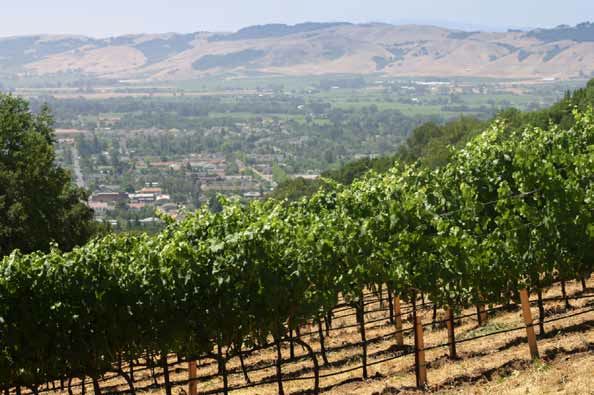
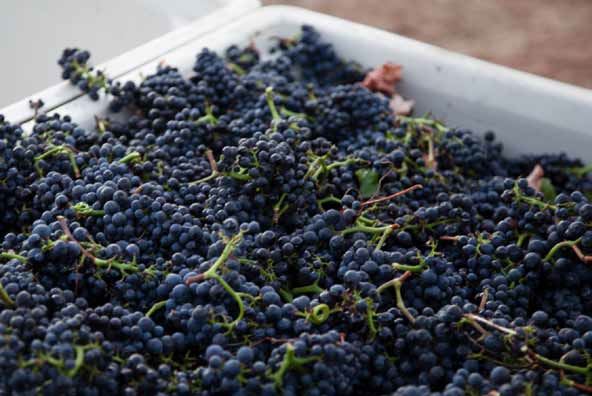
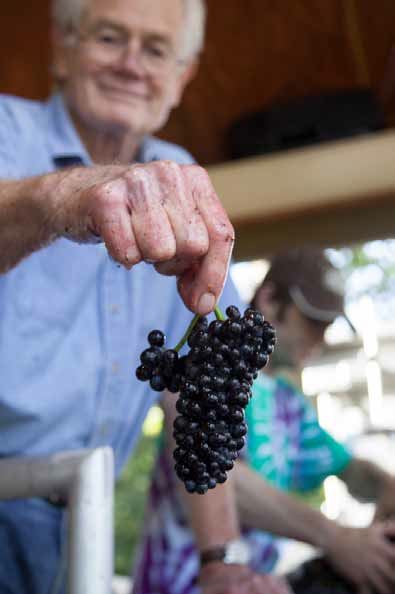 Hanzell wines are available for purchase by guests visiting the new Hanzell Vineyard’s website at www.hanzell.com. The website includes one of the most in-depth tasting note archives of Hanzell wines publicly available, allowing a search of vintages dating back to 1967. The Collector Program guarantees an allocation of Hanzell Vineyards Pinot Noir and Chardonnay and Ambassador’s Circle Exclusive and Private Collector levels provide access to the Ambassador’s 1953 Vineyard releases, the Hanzell wine library annual offering and the holiday magnum offering. Two additional Estate Single Vineyard wines will be released this fall: 2011 Hanzell Chardonnay, de Brye Vineyard, and 2011 Hanzell Chardonnay, Ambassador’s 1953 Vineyard. In 2014, single vineyard wines from Ramos Vineyard and Day Vineyard will be introduced. Visitors are received by appointment only (707-996-3860 or email maildesk@hanzell.com). Two levels of visits are offered, both of which include a guided vineyard tour and seated tastings.
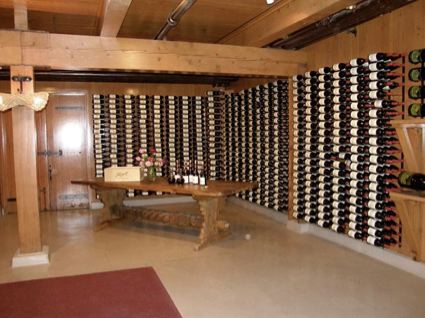 Decanting Hanzell wines is highly recommended. Stand the wines upright for some time before opening to allow any possible sediment to settle. At the winery, the wines are always decanted a minimum of one to two hours before service. Both of the 2010 Pinot Noirs reviewed here were significantly better a day after opening a bottle. I have included the reviews of the latest releases from Hanzell, all of which were the finest young wines I have ever tasted from this winery. They are intriguingly complex wines with hide and seek nuances, and I highly recommend drinking them when you have the leisure time to spend to fully enjoy their charms. These are truly unique connoisseur’s wines. Michael McNeill told me that he is very fond of the 2010 vintage wines. He noted, “The lighter yields gave us very nice concentration. While the 2010s perhaps do not show quite the power as the 2009 vintage, the 2010s have a lovely purity and clarity that I find attractive.” I also reviewed some older vintages of Chardonnay and Pinot Noir from my cellar. I prefer the Hanzell Pinot Noirs from cooler vintages such as 2010. The site is relatively warm and in some vintages, such as 2005 and 2006, the fruit profile is a bit too ripe, the wines lack some verve, and the alcohol is too high for my taste. That said, the wines always clearly and honestly reflect the vintage and terroir and for that they are to be praised.
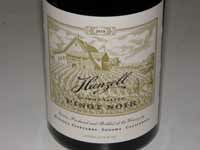 2010 Hanzell Sonoma Valley Pinot Noir 14.5% alc., pH 3.50, TA 0.62, 1,287 cases, $95. Cold, wet weather in the spring. Rains through bloom caused shatter. Summer temperatures were mild with only a few days in mid-August hitting the century mark. The weeks before harvest were unusually mild. Harvest began on September 14, three weeks later than usual with the Hanzell and 777 clones. 5% whole cluster. · Moderate reddish-purple hue in the glass. Initially shy, opening slowly even after decanting. Aromas and flavors of dark red cherries and raspberries with hints of spice and savory herbs arrive over time and reach a very flavorful level. Discreetly concentrated with bright acidity and sturdy tannins, finishing with plenty of oak-kissed fruit intensity. Spectacular the following day when tasted from a previously opened and re-corked bottle. I would advise cellaring this wine for a few years to soften and integrate the tannins and allow the fruit to come to the forefront. This will be an exceptionally lovely wine over the long haul. Score: 95
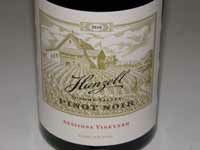 2010 Hanzell Sessions Vineyard Sonoma Valley Pinot Noir 14.5% alc., pH 3.60, TA 0.59, 99 cases, $95. Harvest began September 14, a full three weeks later than usual. Coastal fog led to a leisure harvest and picking concluding four days later. 667, 777 and Swan clones planted on 3309 rootstock were chosen for the fruit qualities that distinguish the Sessions Vineyard. 100% de-stemmed. Aged 18 months in 75% new French oak barrels. · Moderately dark reddish-purple color in the glass. High-spirited aromatics of black cherries, black raspberries, cedary oak and spice lead to a mouth coating palate featuring dense flavors of black cherry infused cola, dark plum and exotic spice. The fruit is perfectly ripe and flat-out delicious, making a statement on entry and an impression on the finish which is of uncommon length. The wine is structured but not hard and the acidity is beautifully integrated. A very special wine that stands out even at this young age. Even better on the nose and palate the following day from a previously opened and re-corked bottle, indicating it will benefit from further cellaring. One of the best Pinots California has to offer in this vintage. Score: 96
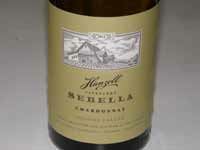 2011 Hanzell “Sebella” Sonoma Valley Chardonnay 13.5% alc., pH 3.20, TA 0.81, 2,023 cases, $36. The Hanzell Chardonnay companion label. Individual vineyard blocks have been identified that form the core of this wine, particularly younger blocks that provide the forward and youthful fruit expression for Sebella. Fermented in stainless steel tanks, then racked to seasoned French oak barrels where it finished fermentation and aged sur lie for six months. Malolactic fermentation was inhibited to preserve the fresh, floral qualities and lively acidity. · Light straw color and clear in the glass. A very complex wine that is quite forward. The nose offers an array of aromas including baked apple, mango, lemon, Irish butter, vanilla, nuts, cut flowers and ocean air. Crisp and refreshing, with pleasing flavors of lemon, green apple and white peach, leading to a lemon drop finish exhibiting racy acidity. I am not usually a fan of unoaked Chardonnay, but this wine caught my attention, and will certainly please fans of Chardonnay vinified in this fashion. Score: 90
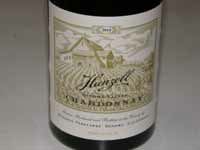 2010 Hanzell Sonoma Valley Chardonnay 14.5% alc., pH 3.20, TA 0.72, 2,329 cases, $75. Cold, wet spring with rains causing a fair bit of shatter. Yields down over twenty percent. Summer temperatures were mild. Harvest extended from September 13 to 28. Select barrels were included in this final blend. · Light straw color and clear in the glass. Nicely perfumed with aromas of lemon drop, peach, buttery brioche and chalk dust. The palate-staining flavors really pique your interest by their depth, offering notes of baked pear, green apple, grilled grapefruit and roasted nuts. Juicy and seductive with lively acidity, this wine is superb in every way. I rarely talk of finish in Chardonnay but this wine offers superb closing intensity and length . An outstanding wine that makes you want to clap. Score: 95
2003 Hanzell Ambassador’s 1953 Vineyard Sonoma Valley Pinot Noir 14.6% alc., 1,507 bottles. · Medium reddish-purple color with no bricking in the glass (unfiltered). Slight wet dog (Brettanomyces) aroma fades over time. Bouquet of an aged wine with scents of black cherry, briar and worn leather. Relatively fresh flavors of dark cherries, black raspberries, anise and spice with soft tannins in the background creating a creamy texture. The finish is striking for its tenacity. A remarkable ten-year-old wine that will go another ten years, but I would enjoy it for its purity of fruit now. Score: 90
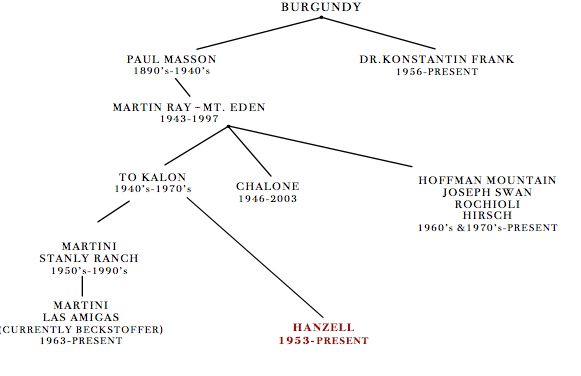 Paul Masson imported cuttings from Burgundy in the late 1800s that are the known forebears to the Mt. Eden selection of Martin Ray. In the 1940s, Martin Stelling!s To Kalon Vineyard received budwood from Martin Ray!s vineyard. U.C. Davis Professor A.J. Winkler selected the vines from which To Kalon Vineyard manager Ivan Schoch cut the budwood. Ivan Schoch was Hanzell!s vineyard manager when Ambassador Zellerbach planted Hanzell Vineyards in 1953 and it was Schoch who introduced the To Kalon Vineyard cuttings to Hanzell Vineyards. The “Hanzell clone” has a high incidence of millerendage. These are berries for which pollination failed and the grapes grew no seeds. The seedless grape is naturally restricted in growth and the grape can be the size of peas. The wines made from small grapes have complex flavor and abundant tannin for greater aging potential. Source: Hanzell Vineyards website - www.hanzell.com.
2004 Hanzell Sonoma Valley Pinot Noir 14.3% alc., pH 3.62, TA 0.57, 1,400 cases. Some head in late April but the vintage was gentle from May to the end of August. Grapes were harvested before a brutally hot September. Yields 1.9 tons per acre. Aged 16 months in 62% new Sirugue oak barrels. · Moderately light reddish-purple color with no bricking in the glass. Aromas of black cherries, dried oak and old books. Very fresh mid weight flavors of black cherry cola backed by sinewy tannins and good acidity which strikes a mineral note. Silky in the mouth with a cherry-driven finish of uncommon intensity. Beautifully balanced for the long haul. Will hold for at least another ten years, but hard to resist now. Score: 90
2005 Hanzell Sonoma Valley Pinot Noir 14.8% alc., pH 3.80, TA 0.56. A rainy spring required shoot-thinning and leaf-pulling into August. First days of September very hot caused rising sugars. First Pinot Noir made in new winery by Michael Terrien. New gentle de-stemmer diminished tannin extraction so fermentation temperature was allowed to climb to its natural peak and after fermentation, the young wine experienced an extended maceration. Aged 18 months in 50% new Sirugue oak barrels. · Medium reddish-purple hue in the glass. The nose offers a ripe fruit profile with aromas of dark berries, game, and smoky oak. The core of blackberry, black currant and raisin fruits is very tasty, although veering to the very ripe side. Still sporting firm tannins that are evident but not hard. Very soft on the palate, maybe too soft, and lacking in acidity. Finishes a little hot. Drink or hold short term. Score: 88
2006 Hanzell Sonoma Valley Pinot Noir 15.3% alc., pH 3.91, TA 0.54. Plentiful crop, brutishly hot July with temperatures reach 114ºF. Fall was unseasonably cool and botrytis was a challenge. Michael Terrien winemaker. Aged 18 months in 50% new Sirugue oak barrels. · Moderately light reddish-purple color in the glass. Very ripe array of aromas including blackberry, blueberry, black cherry, grilled plum and brewed tea. A little alcohol shows up on the nose. Very ripe, dark red and black stone fruits and berries are featured with a noticeable underpinning of welcome baking spices. The tannins are well balanced, and the wine is very soft and smooth, but it lacks a spark of refreshing acidity. Drink or hold short term. Score: 88
2007 Hanzell Sonoma Valley Pinot Noir 14.4% alc., pH 3.70, TA 0.56, 1,361 cases. Dry, cool spring followed by early July heat spike to 100ºF four days in a row. Rest of summer was sunny and warm with morning fog. Sessions, Benny’s and de Brye vineyards. Aged 18 months in 50% new Sirugue oak barrels. · Moderately dark reddish-purple color in the glass. Uplifting aromatics with scents of black cherry, blackberry, blueberry, Asian 5-spice and ash. A big, concentrated wine with a plush core of smoky, tarry black cherry, cassis and spice flavors, wrapped in muscular tannins. Still reserved and opens reluctantly in the glass. Noticeably smooth and velvety on the palate, finishing with slight tannic astringency and a touch of heat. Hold. Score: 90
2006 Hanzell Sonoma Valley Chardonnay 15.0% alc., 3,253 cases. Severe frost in March led to limited yields. Temperatures in the second half of July soared, peaking at 114ºF. 50% of wine was barrel fermented in this vintage. Aged 18 months in one-third new Sirugue French oak barrels. Michael Terrien winemaker. · Moderately deep golden straw color and clear in the glass. Aromas of poppyseed, lemon, vanilla, old book and flint. Modest fullness and creaminess (alcohol-driven) with good vim, offering flavors of lemon curd, honey, yellow peach and marzipan. Finishes with a hint of warmth on the finish. Drink or hold. Score: 88
2007 Hanzell Sonoma Valley Chardonnay 14.3% alc., 2,777 cases. Dry, cool spring with even bud-break. 100ºF four days in early July. Remainder of summer was warm and sunny with foggy mornings. 38% barrel fermented. Aged 18 months in one-third new Sirugue oak barrels. · Light golden straw color and clear in the glass. Bright, fresh aromas and flavors featuring lemon, pear jam, citrus peel, almond and buttered brioche on the nose and lemon, green apple and honey on the palate. Very soft and smooth on entry, finishing on a high note with a zingy, lemon-driven curtain call. Drink or hold. 91.
All In: A Tasting of 100% Whole Cluster Pinot Noir
Jeff Fink, Winemaker, Pence Ranch
Whole cluster fermentation refers to the fermentation of intact clusters of grapes as they are picked from the vine with no intervention of machine processing, leaving all berries and stems intact. Many winemakers remove the stems because they have a high tannin content, and when unripe, can contribute green, vegetative or herbaceous aromas and flavors. The technique of whole cluster fermentation is a somewhat of a wild card, even a gamble, because the results are unpredictable. When successful, more desirable aromas (rose petal, spice) develop from enhanced carbonic maceration, more complex flavors emerge including forest floor, earth, tobacco, pepper and spice, a preferred bold and lengthy tannin structure results that enhances age ability, and the tannins released from ripe stems are often silky smooth.
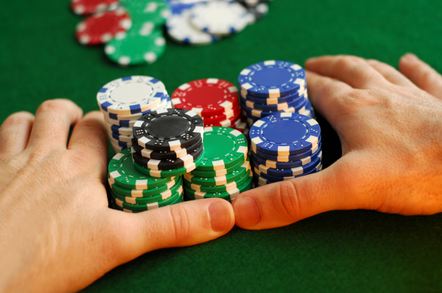 Winemakers determine stem ripeness by studying the appearance (color, stiffness, and lignification) of the stem and rachis at harvest and tasting the stems. The importance of lignification is controversial and winemaker Matt Taylor (Matthew D. Taylor and Reuling Vineyard) told me that in California some lignification is observed but it is never complete, and he believes the choice of using whole clusters has more to do with the taste of the rachis (looking for gorgeous sweetness), rather than lignification. Jamie Kutch claims, "The necessity of lignification is a myth." There are no set limits for whole cluster inclusion and the percentage for those winemakers who employ whole cluster varies depending on the vineyard, clones and vintage. I recently organized a tasting of 24 100% whole cluster Pinot Noir wines from California, Oregon and Burgundy in order to look at the current state of whole cluster inclusion Pinot Noir. Our group of tasters, which included winemaker Jeff Fink, were pleased to find that the typical undesirable aromas and flavors of whole cluster inclusion, such as vegetal and herbaceous characters, broccoli stem, bell pepper and wintergreen were not to be found at all in many wines and not in any significant degree in others. All wines were decanted before tasting and were sampled in a single blind format. Each wine was vinified with 100% whole cluster fermentation unless indicated otherwise. The clear favorites of the group were the 2010 White Rose White Rose Vineyard Estate Dundee Hills Willamette Valley Pinot Noir and 2011 Kutch McDougall Ranch Sonoma Coast Pinot Noir, but there were several outstanding wines. The wines were not scored.
2010 Domaine de Montille Volnay 1er Cru Les Mitans Burgundy France 13.0% alc.. · Moderately light garnet color in the glass. Aromas of red fruits, spice and pine, becoming more effusive over time. Very light and delicate, featuring flavors of red cherry, cranberry, savory herbs and mushroom. Firm tannins and bright acidity. Good.
2010 Presqu’ile Presqu’ile Vineyard Santa Maria Valley Pinot Noir 13.3% alc., 350 cases. · Corked. The wine still had appeal on the palate with nicely ripened and well-spiced darker fruits backed by sinewy tannins.
2009 Rhys Alpine Vineyard Swan Terrace Santa Cruz Mountains Pinot Noir 12.7% alc.. · Medium reddishpurple color in the glass. Shy initially, evolving nicely over time in the glass. Pleasing aromas of dark cherries and berries with a hint of exotic spice and rose petals. Delicious core of black raspberry fruit with a very subtle note of savory green herbs in the background. Juicy, with plentiful dry tannins. Very good.
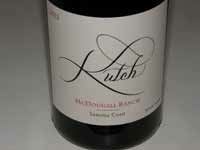 2011 Kutch McDougall Ranch Sonoma Coast Pinot Noir 13.6% alc., 345 cases, $55. · Dark purple color in the glass. Very aromatic with hi-tone purple berry and black cherry, exotic spice, confectionary and floral aromas. Full-bodied and intense, with gentle tannins and an attention-grabbing, long finish. Extraordinary.
2008 Rhys Alpine Vineyard Santa Cruz Mountains Pinot Noir 13.3% alc.. · Dark purple color in the glass. Complex nose offering aromas of forest floor, tea leaf, oak and shy darker berries. Despite decanting, the wine was not giving. Bold flavors of blackberry and plum wrapped in muscular tannin. Very earthy with an intense, sweet fruit-driven finish. Good.
2008 Bishop Creek Cellars Yamhill-Carlton District Willamette Valley Pinot Noir 13.3% alc.. · Moderately dark reddish-purple color in the glass. Aromas of wild berries, forest floor, pine resin and oak. Full-bodied and rustic with a plethora of blackberry, plum and cassis fruit flavors enrobed in firm, but soft tannins. Good.
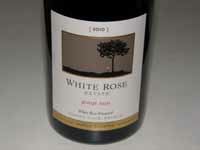 2010 White Rose White Rose Vineyard Estate Whole Cluster Dundee Hills Willamette Valley Pinot Noir 13.3% alc., 97 cases. · Moderately light reddishrose color in the glass. Lovely nose with scents of fresh cherries, sandalwood, vanilla, exotic spices and floral highlights. The aromatics leap out of the glass. Delicious red cherry core with tamed, fine-grain tannins, and a long spiced cherry finish. Bravo! Knowing a Dujac wine was in this flight, everyone thought this was the Dujac wine since the aromatics reminded of Dujac. Extraordinary and one of the clear favorite wines of this tasting.
2004 Domaine Dujac Chambolle Musigny 1er Cru Les Gruenchers Burgundy France 13.0% alc.. · Moderate reddish-purple color in the glass. Very little fruit on the nose that features a leafy, green and oaky theme. Much better on the palate with a tasteful array of flavors including plum, berry, and dark chocolate. Serious tannins, but not hard, and a beguiling fruit-filled finish. Good.
2011 Sandhi Wenzlau Sta. Rita Hills Pinot Noir 13.0% alc.. · Dark purple color in the glass. Intense aromas of black cherries. Soft and juicy on the palate with moderately concentrated flavors of black cherry and blackberry wrapped in powdery tannins. Finishes with noticeable sappy fruit. A fruit dominated wine that shows little whole cluster influence but is nevertheless enticing. Very good.
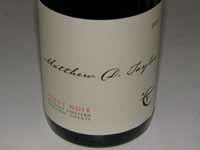 2010 Matthew D. Taylor Michaud Vineyard Monterey County Pinot Noir 14.0% alc.. · Moderately light reddish-purple color in the glass. Nicely perfumed with fresh black cherry, floral and spice aromas. On entry, the mouth coating black cherry fruit makes an impression, as does the spicy, fruity finish. The texture is smooth and comforting, driven by focused dry tannins. Thoroughly pleasing. Outstanding.
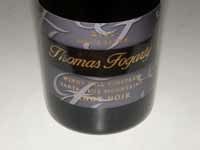 2010 Thomas Fogarty Windy Hill Vineyard Santa Cruz Mountains Pinot Noir 13.6% alc., 50 cases. · Moderately light reddish-purple color in the glass. Welcoming nose with bright aromas of dark cherries and berries, spice, sandalwood and rose petals. Mid weight, sweet and sappy flavors of black raspberry and black cherry, caressed by tame, dry tannins. Very juicy with bright acidity and some finishing intensity. Outstanding.
2010 Flowers Sea Ridge Vineyard Block 11 Sonoma Coast Pinot Noir 14.0% alc., 140 cases. · Medium reddish-purple color in the glass. Shy nose offering delicate aromas of plum and oak. Discreetly concentrated core of well-spiced and oak-kissed plum and black raspberry fruits clothed in fuzzy tannins. A saline character underlies this wine. Velvety on the palate with a succulent finish. Outstanding.
2007 Freestone Vineyards Quarter Moon Vineyard Sonoma Coast Pinot Noir 13.5% alc.. 67% whole cluster. · Dark reddish-purple color in the glass. I have sampled this wine on several occasions, thoroughly enjoying it each time, and this bottle was atypical. The nose offers very ripe, raisiny fruit with hints of spice, sap and dill pickle. Relatively awkward on the palate with very ripe tasting fruits and firm, aggressive tannins. Withhold judgment.
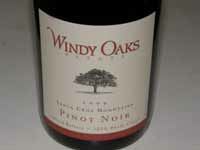 13.9% alc., 173 cases. · Moderately light reddish-purple hue in the glass. Enticing aromas of exotically spiced cherries, potpourri and oak vanillin. Delicious core of black cherry fruit embellished with baking spice and complimentary oak. Very seductive and beautifully composed with a dreamy texture and an explosive finish. Outstanding.
2010 Byron Whole Cluster Santa Maria Valley Pinot Noir 13.8% alc.. Mt Eden clone. · Deep, dark purple color in the glass. Lovely aromas of fresh black cherries with coffee-laced oak. Still young and somewhat withdrawn, but showing bottomless plum and blackberry flavors laced with smoky oak and clothed in generous tannins. Should benefit from more cellar time to integrate the oak and tannins. Great potential. Very good.
2008 Z’ivo Whole Cluster Project Eola-Amity Hills Willamette Valley Pinot Noir 13.7% alc.. · Moderately dark reddish-purple color in the glass. Very shy nose initially, opening slowly to reveal pleasing floral aromas with hints of purple fruits and spice. Very drinkable, mid weight offering with luscious, sweet-edged plum and blackberry fruits backed by firm tannins, finish with some aplomb. Very good.
2011 Sandler Wine Co. Boer Vineyard Chalone Pinot Noir 13.7% alc.. · Moderately dark reddish-purple color in the glass. Aromas of chocolate covered cherries, root beer and soy sauce. Delicious core of cherry pie glaze, hitting the mid palate with a vengeance and finishing with good intensity. A hint of chocolate brownie adds interest. Very soft in the mouth and easy to cozy up to. Very good.
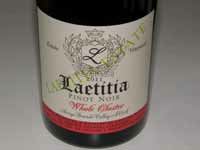 2011 Laetitia Estate Whole Cluster Arroyo Grande Pinot Noir 14.7% alc., 330 cases. · Moderately dark reddish-purple color in the glass. The nose is really captivating, featuring aromas of black cherries, rose petals, exotic spice and Snicker’s bar. Rich, sweet-edged, sappy core of dark red and black fruits with an intense finish. A very sexy wine that displays exquisite balance. Outstanding.
2010 Brewer-Clifton Sta. Rita Hills Pinot Noir 14.7% alc., 1870 cases. · Moderate reddish-purple color in the glass. A little over the top ripeness wise with a nose infused with port aromas. Mid weight flavors of black cherry, cassis and raisin. Very big and sappy with some sinewy tannins and a fruit-driven finish displaying a bit of heat. Decent.
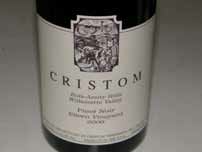 2009 Cristom Eileen Vineyard Eola-Amity Hills Willamette Valley Pinot Noir 14.5% alc.. A high percentage of whole cluster but not 100%. · Moderately dark reddish-purple color in the glass. Intoxicating aromas of dark cherries and berries with notes of exotic spices and bacon. Incredibly plush and velvety on the palate with a tasteful well-ripened dark fruit core, plenty of spice, and tame tannins. Outstanding.
2006 Tantara Solomon Hills Vineyard Santa Maria Valley Pinot Noir Cleanskin. Clone 777. · Dark reddishpurple hue in the glass. Aromas of black cherries, black raspberries and spice. Pushes the ripeness envelope with big, bold dark fruit flavors. Nicely balanced tannins and welcome juiciness, the wine has noticeable verve. Good.
2010 Melville Terraces Sta. Rita Hills Pinot Noir 15.2% alc., 465 cases. · Very dark purple color in the glass. The nose offers hi-tone aromas of dark red and black stone fruits and sandalwood. A hedonistic wine with uncommon intensity of purple fruits, finishing with a charge of sweet, very ripe, sappy fruit. Not my thing, but well done in its style. Very good.
2009 Native 9 Rancho Ontiveros Vineyard Santa Maria Valley Pinot Noir 14.5% alc.. · Dark reddish-purple color in the glass. Plenty of oak shows up on the nose which features dark red and black fruits and spice. Velvety and plush on the palate with a plush core of sweet-edged fruit, finishing with a little heat. Good.
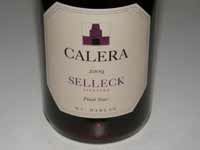 2009 Calera Selleck Vineyard Mt. Harlan Pinot Noir 14.1% alc., 200 cases. · Moderately dark reddish-color in the glass. Aromas of ripe berries, red roses, sassafras and a slight green note. Luscious essence of fresh black raspberries with an incredibly intense and long finish. A little herbal in character with firm, dry tannins. Very good.
When she was good, She was very, very good, And when she was bad she was horrid.
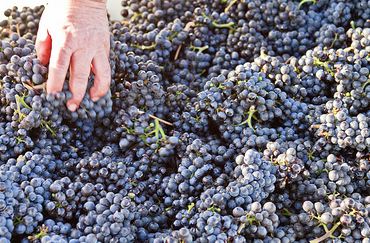
Sips of Recently Tasted Pinot Noir
Maybe California’s best kept secret for reasonably priced, superbly crafted wines. Located in the tiny town of Briceland in Humboldt County, the winery was founded in 1985 by winemaker Joe Collins and his lifelong partner Maggie Carey. Collins, a graduate of University of California at Davis, pioneered winegrowing in southern Humboldt County and was involved in the planning, establishment and management of practically all early vineyards in the area which is most suited to Pinot Noir, Chardonnay and Sauvignon Blanc. Collins stepson, Andrew Morris, has taken on more of the winemaking responsibility of late. See also the reviews of Arneis and Chardonnay from Briceland Vineyards in this issue. Visit www.bricelandvineyards.com.
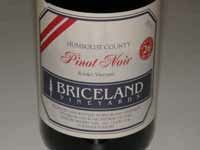 2011 Briceland Vineyards Ronda’s Vineyard Humboldt County Pinot Noir 13.4% alc., 50 cases, $29. Formerly Le Chien Blanc Vineyard. Located at 1600 feet elevation northwest of Briceland Vineyards. Slowed ripening in this vintage so more acid and less tannin than typical for this site. Aged 18 months in oak barrels. Unfined and unfiltered. · Medium reddish-purple color in the glass. The nose is intoxicating with fresh aromas of racy raspberry, red cherry, spice and sandalwood. Refreshingly crisp on the palate with charming flavors of fresh red raspberries and cherries caressed by supple tannins and framed by mouthwatering acidity. Not a fruit bomb by any means, but plenty of flavor without weight and great pinotosity. Score: 92
2011 Briceland Vineyards Phelps Vineyard Humboldt County Pinot Noir 14.2% alc., $27. A relatively warm site in a cool year farmed by Pam and Todd Phelps. Small yields due to poor crop set which also led to less firm tannins and concentration. Aged 12 months in oak barrels. Unfined and unfiltered. · Medium reddish-purple hue in the glass. Brooding aromas of dark red berry preserves and forest floor. Real density and intensity of flavor with structured tannins and an amazingly long finish. Dark red cherries and berries are at the core which has a savory undertone. Score: 91
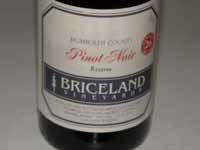 2011 Briceland Vineyards Reserve Humboldt County Pinot Noir 13.6% alc., 25 cases, $45. Inaugural offering. A blend of 2011 vintages from Bosco, Phelps and Ronda’s vineyards. Aged 18 months in oak barrels. · The nose is rather shy, offering only a hint of dark red fruit and oak aromas. The flavor profile is more developed with delicious notes of perfectly ripened black cherries, black raspberries and plum underlain with hints of graham and cardamom spice. The fruit has real presence on the palate and offers layers of pleasure. Beautifully balanced with well-integrated acidity and tannins. Very impressive length on the peacock tail finish. This wine needs more time in the cellar for the nose to catch up to the palate. Score: 95
The Dierbergs farm two cool climate estate vineyards: the 160-acre Dierberg Estate Vineyard just outside the town of Santa Maria (two-thirds Pinot Noir) and the newer 7-acre Drum Canyon Vineyard in the Santa Rita Hills planted solely to Pinot Noir. The winemaker is Andy Alba. Grapes are sold to several Pinot Noir producers and Pinot Noir is produced under the Dierberg and Three Saints labels. Visit the website at www.dierbergvineyard.com.
2010 Dierberg Drum Canyon Vineyard Estate Grown Sta. Rita Hills Pinot Noir 13.2% alc., pH 3.45, $44. Located in the eastern edge of the Sta. Rita Hills AVA. Planted in 2005 to a mix of heritage clones and low vigor rootstocks. Aged 16 months in used French oak barrels. Lightly fined, unfiltered. · Deep, dark purple color in the glass. Brooding aromas of blackberries and boysenberries with hints of briar, forest floor and espressolaced oak. Earthy, rugged and full-bodied, with a dense core of blackberry, cassis and blueberry fruits. A brute of a wine, yet retains a comfortable mouth feel. A little more expressive and gentle the following day from a previously opened and re-corked bottle. Score: 88
A producer of premium Pinot Noir and Chardonnay sourced exclusively from the Ranch House Block at Durell Vineyard in the Sonoma Coast. This Rosé is the first Dunstan release made from vine to bottle by winemaker Kenneth Juhasz and is the only rosé produced from Durell Vineyard. The wine is available through the winery’s wine club and at www.dunstanwines.com.
2012 Dunstan Durell Vineyard Sonoma Coast Rosé 12.9% alc., 95 cases, $25. Cellared and bottled by Sand Hill Wines of Sonoma. A true rosé made from grapes grown expressly for this wine from the 8.5-acre Ranch House Block planted in 2005. Pressed immediately to 50% neutral oak barrels and 50% stainless steel tanks. · Pale orange color and clear in the glass. Demure aromas of strawberries, rose petals and seashells. Very delicate flavors of strawberries, orange zest, watermelon and cantaloupe. Crisp, bright and refreshing. Score: 87
An iconic producer which carries the name of pioneering Russian River Valley winemaker Gary Farrell, whose winemaking career dates back to the mid 1970s. Farrell sold his eponymous winery brand and winery to Allied Domecq in 2004 and it was subsequently acquired by its current owner, The Vincraft Group in 2011. Farrell left the winery in 2006 in the hands of winemaker Susan Reed who had worked with him three years before he left, and carried on the Farrell style and level of excellence. In early 2012, Theresa Heredia, formerly of Joseph Phelps Freestone Vineyards, replaced Reed. The winery has superb vineyard sources acquired through the years by Farrell’s contacts, with the addition of some new equally stellar growers. The wines are consistently excellent in a style with modest extraction and ripeness and good tension and acidity. The stylish tasting room on Westside Road, one of the nicest venues in the Russian River Valley, is open daily. Visit the website at www.garyfarrellwines.com.
2010 Gary Farrell Stiling Vineyard Russian River Valley Pinot Noir 13.8% alc., pH 3.39, TA 0.63, 296 cases, $50. Released February 2013. Originally planted in 1988 by owners Don and Barbara Stiling, this site has well-drained Goldridge soils and has the typical Russian River Valley coastal fog intrusions. Swan clone. 100% de-stemmed, aged 13 months in 50% new French oak barrels. · Moderately light reddish-purple color in the glass. Very typical of a Russian River Valley Pinot Noir in a cool vintage showing more delicacy. Aromas of Bing cherries, strawberries and baking spices. Very silky on the palate with a core of red cherry, red raspberry and cranberry fruit flavors. The oak is beautifully integrated, the tannins are quite reserved, the bright acidity adds freshness and verve, and the whole package is easy to drink. Score: 90
2010 Gary Farrell Bien Nacido Vineyard Santa Maria Valley Pinot Noir 14.0% alc., pH 3.38, TA 0.724, 483 cases, $44. Released May 2012. Sourced from the legendary “Q Block,” considered the most prestigious Pinot Noir block on this famous vineyard. 100% de-stemmed, aged 8 months in 50% new French oak barrels. · Medium reddish-purple color in the glass. Shy, but pleasant aromas of black cherry, raspberry and baking spice. Noticeably intense flavor of steaming, fresh black cherry tart fresh out of the oven slathered in French vanilla creme. Finishes with a hint of Hoison sauce, herbs and classy oak. Like all the Gary Farrell Pinot Noirs in this vintage, the balance is spot on, guaranteeing the potential for mid to long-term cellaring. Score: 92
2010 Gary Farrell Hallberg Vineyard Russian River Valley Pinot Noir 14.0% alc., pH 3.41, TA 0.64, 520 cases, $55. Released September 2012. Release September 2013. From the 100-acre Hallberg Vineyard named for its previous owners and managed by wine industry veteran Kirk Lokka. Located on Highway 116 outside of the town of Sebastopol on the southern edge of the Green Valley. 100% de-stemmed, aged 13 months in 50% new French oak barrels. · Moderately light reddish-purple color in the glass. Lively aromas of cherries, blueberries, toast and cardamom spice. Delicious darker fruit array of flavors featuring black cherry, blueberry and pomegranate, with a complimentary hint of new oak. Somewhat lighter in this vintage and very elegant in presentation. The tannins are quite supple and there is a good acid skeleton. Very approachable now but has the balance to hold and even improve over the next five to ten years. Score: 90
2010 Gary Farrell Hallberg Vineyard Dijon Clones Russian River Valley Pinot Noir 14.1% alc., pH 3.41, TA 0.64, 401 cases, $60. Released February 2013. Clones 667 and 777. 100% de-stemmed, aged 13 months in 50% new French oak barrels. · Medium reddish-purple color in the glass. Black stone and berry fruits on the nose and palate are punctuated with exotic Indian spices, and earth, floral and forest notes. Moderately rich and full-bodied with a welcoming velvety mouth feel, and a very lengthy finish that displays a good cut of acidity and a touch of heat. Score: 90
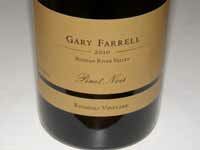 2010 Gary Farrell Rochioli Vineyard Russian River Valley Pinot Noir 14.0% alc., pH 3.41, TA 0.72, 291 cases, $65. Released November 2012. This release is from select blocks of the 128-acre Rochioli Vineyard planted in 1974, 1995 and 2000. Some of the fruit is from cuttings taken from the original mother block planted in 1968. 100% destemmed. Aged 13 months in 50% new French oak barrels. · Moderately light reddish-purple color in the glass. Bright aroma of fresh Bing cherry tart and sandalwood. A pretty wine characterized by balance and elegance. Relatively delicate cherry, raspberry and cola flavors with tame tannins, a texture like a velvet-lined glove, and bright acidity. Like fine lingerie, this wine seduces you with laciness and transparency. The winemaking is impeccable and allows the vintage and the vineyard terroir to show through. Score: 95
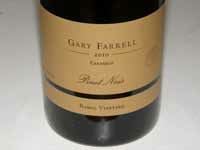 2010 Gary Farrell Ramal Vineyard Carneros Pinot Noir 14.1% alc., pH 3.46, TA 0.66, 784 cases, $50. Released December 2012. Twelve different clones among 45 vineyard blocks. 100% de-stemmed, aged 8 months in 40% new French oak barrels. It is a tribute to the fastidious vineyard work and subsequent grape sorting (heat spikes scorched and sunburned many clusters) that this wine turned out so beautifully. · Moderately light reddish-purple color in the glass. Enchanting nose offering dreamy aromas of fresh cherries, sandalwood and spice. Very soft and satiny in the mouth with a noble cherry core, offering an earthy underbelly so typical of Carneros. Impeccably balanced t n ‘a, while exhibiting oodles of charm, and finishing with a charge of citrus-laced cherries. Ramal-lama-ding-dong. Score: 95
2011 Gary Farrell Toboni Vineyard Russian River Valley Pinot Noir 14.4% alc., pH 3.45, TA 0.64, 400 cases, $56. Released May 2013. From the Toboni Oakwild Ranch Vineyard planted in 2001 to clones 115, 667, 777 and Pommard on 101-14 rootstock. Located in the Santa Rosa Plain, the site experiences sunny, warm days and morning fog. Soils are clay loam with some mineral and gravel composites. 100% de-stemmed, aged 8 months in 40% new French oak barrels. · Moderately light red color in the glass. Appealing aromas of alpine strawberries, cherries and redwood forest. Light and straightforward, and well-crafted, but lacks bling. Red and blue fruits are featured backed by oak-driven notes of tea and spice, with very supply tannins. l have had enticing wines from this vineyard in the past, but the site underperformed in this difficult, cool vintage. Score: 88
2011 Gary Farrell Hallberg Vineyard Russian River Valley Pinot Noir 14.5% alc., 602 cases, $55. Release September 2013. · Medium reddish-purple color in the glass. Very aromatic with enticing aromas of dark cherries and raspberries and spice. Very tasty with moderately intense flavors of darker stone and berry fruits and cassis, and a very subtle complement of oak and spice. Nicely balanced tannins, well-integrated acidity and a finish with considerable fruit-driven intensity. An impressive wine from a challenging vintage. Score: 91
David and Christianna Rossi produce small lots of primarily vineyard-designated Pinot Noir from multiple appellations including Anderson Valley, Russian River Valley, Sonoma Coast, Carneros and Chalone. A popular value-priced appellation offering, On Point, is reviewed here. The wines are sold through a mailing list and the website at www.fulcrumwines.com.
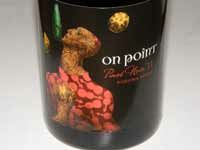 2011 On Point Sonoma Coast Pinot Noir 14.0% alc., 69 cases, $35. Clones 115, 667, 777 and Pommard from the Petaluma Gap region of the Sonoma Coast. Aged 16 months in 30% new French oak barrels. · Medium reddish-purple color in the glass. Uplifting aromas of black raspberry preserves, cassis and spice. Tasty core of dark cherries, black raspberries, and spice. Nicely composed with balanced tannins and a velvety presence in the mouth. A solid, even special, daily drinker. Score: 89
A fifteen-year veteran of the Oregon wine industry and former Associate Winemaker at Domaine Serene Winery and Winemaker and Vineyard Manager at Shea Wine Cellars, Drew Voit, produces small lots of Pinot Noir, Pinot Blanc and Riesling under his private label. Voit also consults for a number of wineries in the Willamette Valley and operates a custom winemaking operation for small ultra-premium brands (Declan Wine Co. in Newberg). The Assistant Winemaker is Andrew Bandy-Smith. The wines are sold through a mailing list at www.harpervoit.com.
2010 Harper Voit Old School Willamette Valley Pinot Noir 13.6% alc., 50 cases, $55. OId School Vineyard is 800 feet above sea level with exceptionally well-drained and nutrient deficient Bellpine soil. Dry farmed using old school methods (draft horses, compose and natural weed suppression). · Moderate dark reddish-purple color in the glass. Aromas of spiced plum, black raspberry, cassis and vanilla picking up interest and intensity over time in the glass. Soft and smooth on the palate with lively flavors of dark plum, blueberry and black raspberry with well-integrated oak in the background. A lively cut of citrus-driven acidity underlies an uplifting finish. Score: 90
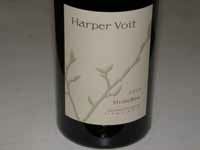 2010 Harper Voit Strandline Willamette Valley Pinot Noir 13.6% alc., pH 3.60, 125 cases, $35. A vineyard blend from Old School Vineyards and a select parcel from the Ribbon Ridge AVA. 100% de-stemmed, long and steady fermentation over 21-23 days. Aged in 60% new French oak barrels. · Moderate dark reddish-purple color in the glass. Nicely perfumed with bright aromas of purple grapes, plum sauce, spice and custard. Richly concentrated flavors of boysenberry, black plum, white pepper and spice wrapped in tame, balanced tannins. Very seductive velvety mouth feel. A little more body and spice than the Old School bottling at this young age, but the Old School is more age worthy. Score: 89
It has been 25 years since J. Lohr Vineyards & Wines released its first wine, a 1987 J. Lohr Estates Riverstone Chardonnay. The winery was founded in 1972 by Jerry Lohr who pioneered winegrowing on California’s Central Coast. The 2011 release of the following wine represents a stylistic evolution. According to winemaker Steve Peck, “It is darker and denser than preceding vintages owing to the cool growing conditions in 2011.” 2011, like 2010, was the coolest vintage in the Arroyo Seco appellation in the past decade. Moderate autumn weather allowed flavor development with less sugar accumulation than in most years.
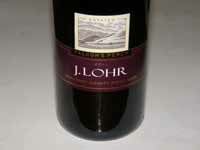 2011 J. Lohr Falcon’s Perch Monterey County Pinot Noir 13.63% alc., pH 3.79, TA 0.54, 19,800 cases, $17. From select vineyards in the Arroyo Seco region. Dijon clones are the backbone. 76% Pinot Noir and 24% Valdiguié (winemaker Steve Peck says Valdiguié goes beautifully with Pinot Noir). After a 3-day cold soak, fermented in 6- ton and 12-ton lots in open-top punch down tanks. Light pump overs with daily punch downs for 5 to 10 days. 100% MLF. Matured in stainless steel with 10% aged in neutral French oak barrels. · Medium reddish-purple color in the glass. Lovely nose with aromas of dark berries, rose petals, and exotic spices that retain interest over time. Delicious and entirely seductive, with flavors of dark cherry and berry with complimentary notes of spice, anise and oak. Soft in the mouth, with mild tannins, commendable balance, and very respectable finishing intensity. The addition of Valdiguié gives this wine a unique flavor profile that is quite interesting. A superlative value priced wine that is widely available in the retail marketplace. Score: 90
Noted veteran winemaker Paul Hobbs started his namesake label in 1991. In 1998, he planted the estate Lindsay Vineyard near Graton and in 2003 built a winery overlooking this vineyard. Besides his own Paul Hobbs Wines, he has several winery clients he consults for in the United States, South America, France Hungary and even Armenia. Paul Hobbs produces about 15,000 cases annually of both appellation-designated and vineyard-designated wines. The wines are largely sold to a mailing list. Visit www.paulhobbs.com.
2011 Paul Hobbs Russian River Valley Pinot Noir 14.5% alc., $50. Sourced from selected lots of fruit from Katherine Lindsay Estate, Bellflower, Fraenkle, Gap’s Crown, Ulises Valdez and Walker Station vineyards. Clones Beba, Calera, 115, 667 and 777. Yields 1.4 to 3.4 tons per acre. Indigenous fermentation, 2.5% whole cluster, aged 11 months in 45% new French oak barrels. Unfined and unfiltered. · Moderately dark reddish-purple color in the glass. Black cherries and berries are featured on the nose and palate in a big, bold, dense style with notes of cola, oak, anise, dark chocolate and clove spice. Generous tannins support the concentrated fruit. Finishes with a fruit-driven flourish, leaving a hint of heat in its wake. A Schwarzenegger wine. Score: 86
A collaboration between winemaker James Foster and the San Francisco based, Grammy Award-winning rock band - Train. Train guitarist Jimmy Stafford has been a wine lover for many years and often received wine from fans as he performed across the world. He found wine was a great way to connect with fans, and this led to the founding of Save Me, San Francisco Wine Co.. Five California wines are currently offered, including “Drops of Jupiter” California Red Wine, “Calling All Angels” Chardonnay, “California 37” Cabernet Sauvignon, “Hella Fine” Merlot, and the latest addition, “Soul Sister” Pinot Noir. Save Me, San Francisco proudly donates proceeds from its wine sales to support Family House, a non profit organization providing temporary housing to families of seriously ill children while they receive treatment at the University of California Benioff Children’s Hospital. As a musician who tours most of the year, Stafford has incorporated wine into his touring life, consume a glass or two of red wine before each show while getting ready in the dressing room. Wine has become an important part of his preshow routine. Winemaker James Foster is a graduate of University of California Executive Wine Program. Check the website for retail distribution or to purchase the wines directly: www.savemesanfranciscowinecompany.com.
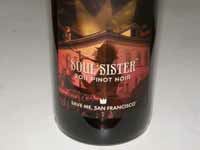 2011 Save Me, San Francisco Soul Sister California Pinot Noir 13.0% alc., pH 3.62, TA 0.64, 12,000 cases, $12. Released winter 2012. · Moderately light reddish-purple color in the glass. Very accessible nose with bright aromas of strawberry, cherry, tea leaf and cardamom spice. Relatively light and delicate, but flavorful, with notes of dark red strawberries, cherries, cranberries and a hint of spice. Crisp and easy to drink with very tame tannins and appealing balance. A solid, straightforward, easy summer drink. Score: 88
Talbott’s Sleepy Hollow Vineyard was planted in 1972 and is one of the first vineyards in the Santa Lucia Highlands appellation. It currently has some of the region’s oldest plantings of Pinot Noir and Chardonnay. Located on 585 acres of benchland 13 miles south of Monterey, the well-drained vineyard features sparse soils of sand, gravel and granite. The vineyard receives morning sunlight from its east-northeast exposure, and lives much of the time in cool fog and wind from the Pacific Ocean. Sleepy Hollow Vineyard has always had a reputation for great Chardonnay, but since winemaker Dan Karlsen joined Talbott in 2008, he has been producing stellar Pinot Noir from this venerable vineyard as well. Karlsen has focused on the most sheltered sites in the vineyard so that wind does not unnecessarily toughen the skins of the Pinot Noir grapes. He re-trellised the cordon arms of the vines and eliminated kicker canes to ensure even ripening. In the winery he designed and built a room dedicated to small lot open-top fermentations and built a custom punch down device. No must pumps, crushing of fruit, cold soaks, extended maceration, enzymes, malolactics or fining agents are employed in the vinification of Pinot Noir. Karlsen says, “There are two ingredients in our Pinot Noirs: estate grown grapes and yeast. Other than a little new oak, what you get is the voice of the vineyard.” His efforts really show in the purity and balance of the following wines. Sleepy Hollow Vineyard has both self-rooted Martini clone vines and newer Dijon clone plantings. Each block is vinified the same regardless of clone and only once he decides which lot will go into Sleepy Hollow Vineyard, Logan and Kali Hart, does he adjust the amount of new oak and length of aging. The Sleepy Hollow Vineyard bottling gets the most new oak (30%) and is aged slightly longer in barrel (11 months). The Kali Hart is the most fruit-driven and approachable, is aged in 10% new oak for 9 months. The Logan strikes a balance between the two Pinot Noirs as far as style and winemaking. All three are superb reflections of a world class vineyard. Visit the website for more information and to acquire the wines: www.talbottvineyards.com.
2011 Talbott Kali Hart Estate Grown Monterey Pinot Noir 14.2% alc., pH 3.87, TA 0.59, screwcap, $21. Aged 9 months in 10% new French oak barrels. · Moderately light reddish-purple color in the glass. Pleasant aromas of raspberry preserves, fennel and graham. Lighter weighted, but flavorful, featuring slightly confected red cherry, cranberry and red raspberry with a complimentary hint of oak. Softly textured and crisp on the palate with supple tannins and bright acidity. Will work beautifully at the dinner table. Score: 88
2011 Talbott Logan Sleepy Hollow Vineyard Estate Grown Santa Lucia Highlands Pinot Noir 14.3% alc., pH 3.71, TA 0.65, $25. · Moderate reddish-purple color in the glass. Lively aromas of fresh black cherries, blueberries and black raspberries with a hint of oak spice. Very smooth on entry and flavorful, offering mid weight tastes that echo the aromas with accents of oak vanillin, black tea and spice. Admirable finesse, with a rousing finish that is quite generous. Score: 92
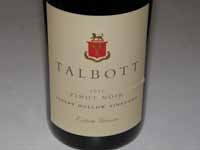 2011 Talbott Sleepy Hollow Vineyard Estate Grown Santa Lucia Highlands Pinot Noir 14.3% alc., pH 3.80, TA 0.60, $42. · Moderate reddish-purple color in the glass. Lovely perfume of black cherries, black plum, balsam and spice which grabs your attention. More concentration and structure than the Kali Hart and Logan, but still very approachable and light on its feet. Beguiling flavors of dark stone fruits with a riff of oak vanillin and spice. Admirable balance with seamless tannins and a pleasing finish of extended length. Score: 95
Ten Acre was founded by Scott and Lynn Adams, who have grown wine grapes for almost 20 years. They are known for producing Zinfandel and Rhone varietals at their other winery, Bella, but they developed a love for Pinot Noir and Chardonnay while living on their 10-acre vineyard in the Russian River Valley. They established Ten Acre to produce Pinot Noir and Chardonnay from vineyards in the cooler parts of the Russian River Valley and the Sonoma Coast. Ten Acre’s vineyard program is guided by renowned vineyard manager Charlie Chenoweth and the wines are crafted by Michael Zardo, who was the assistant winemaker at Pisoni Vineyards & Winery for almost a decade. Visit the website at www.tenacrewinery.com.
2011 Ten Acre Russian River Valley Pinot Noir 14.7% alc., pH 3.60, TA 0.62, 350 cases, $38. Select barrels intended to capture the essence of the Russian River Valley AVA. Sources include Cummings, Jenkins, Stephens and LaCzar vineyards. Various clones, aged in 33% new, 33% 1-year-old, and 33% 2-year-old French oak barrels. Some unspecified whole cluster fermentation. · Medium reddish-purple color and unfiltered appearance in the glass. Scents of black cherries, tobacco oak, forest floor and spice. Middleweight flavors of black cherry, black raspberry, pomegranate and cola. Rich and fruity with balanced tannins. Solid, but not exceptional. Score: 87
2011 Ten Acre Jenkins Vineyard Russian River Valley Pinot Noir 14.1% alc., pH 3.58, TA 0.61, 180 cases, $65. Vineyard located on a hillside outside Sebastopol and planted by Charlie Chenoweth in 2001 in Goldridge and gravely loam soils. Clones 667, 777 and 115.Yields 1.5 to 2 tons per acre. Aged in 50% new French oak barrels. · Moderately dark reddish-purple color in the glass. Fresh aromas of dark cherries and berries with a subtle complement of oak. Very flavorful in a mid weight style, hitting the mid palate with intensity and finishing with power. The core features perfectly ripened black cherry and blueberry fruit with a good dose of spice. The fruit really grabs your attention. My only nit is the specter of alcohol in the background. Score: 89
2011 Ten Acre Cummings Vineyard Russian River Valley Pinot Noir 14.3% alc., pH 3.63, TA 0.60, 200 cases, $55. Planted in 2001 by Charlie Chenoweth on a flat land near Santa Rosa. A relatively warm site with sand and clay soils. · Dark reddish-purple color in the glass. Very fruit nose featuring penetrating aromas of boysenberry and plum underpinned with subtle accents of rose petal, sap and sawdust. The core of darker berry and plum fruit is appealing but doesn’t explode on entry like the Jenkins bottling. A hint of grilled mushrooms, cola and oak add interest. Very smooth with silky tannins and some finishing presence. A little heat hangs around in the background. Score: 87
Dr. Thomas Fogarty and winemaker Michael Martella planted vines and built a small estate winery in the Skyline region of the Santa Cruz Mountains beginning in 1978. The coastal climate, high elevation (2,000 feet above sea level) and thin rocky soils define the site-expressive wines. Today, a new generation continues the founders’ spirited pursuit. Michael Martella, who was the Head Winemaker for 35 years, has stepped down to focus on farming the Fogarty Estate Vineyards. Tom Fogarty, Jr., now runs the estate, and winemaker Nathan Kandler, who has been at Thomas Fogarty since 2004, has assumed the Head Winemaker responsibility and produces distinctive Pinot Noir and Chardonnay from 25 acres of estate vineyards including 8 uniques sites, in the Santa Cruz Mountain appellation. With the 2011 vintage, new modern labels and packaging are featured. Regarding the 2011 vintage, it was cold and yields were small. Berry size was tiny, many grapes featuring one or no seeds. The skin to juice ratio of the musts was quite high, there were few seeds, and as a result, the tannins were low. Yields were under 1 ton per acre. Visit the website at www.fogartywinery.com.
2011 Thomas Fogarty Razorback Vineyard Estate Grown Santa Cruz Mountains Pinot Noir 12.7% alc., 100 cases, $ pre-release. From a 2-acre vineyard planted in 1986 at 1400 feet elevation to Swan, 115, 667 and 777 clones. Soil is sandstone and shale. · Moderately light reddish-purple color in the glass. Aromas of black raspberry, blueberry and tea leaf. Light on its feet and soft in the mouth, with delicate flavors of boysenberry, blueberry and pomegranate backed by an oak-driven tobacco and tar note. The tannins are nicely proportioned, an acidic tang is evident, and there is some finishing interest. Score: 89
2011 Thomas Fogarty Rapley Trail Vineyard Estate Grown Santa Cruz Mountains Pinot Noir 13.0% alc., 122 cases, pH 3.41, TA 0.63, $65. From a 6-acre estate vineyard planted in 1983 at 1650 feet elevation. 20% Henry Ayrton's Block and 13% M Block. Soils are fractured shale. Swan clone. 30% whole cluster, spontaneous fermentation. Aged 18 months in 40% new French oak barrels. Bottled unfined and unfiltered. · Moderate reddish-purple hue in the glass. Very lovely aromas leap from the glass filling the air with scents of cherry and rose petal. Wow! Deep cherry, black raspberry, black grape and spice flavors in a mid weight style with a complement of oak in the background. Very suave with more pop than the Razorback bottling, and offering good finishing intensity. I suspect this will improve further over time in the cellar but it is hard to resist now. Score: 93
2011 Thomas Fogarty Rapley Trail Vineyard M Block Estate Grown Santa Cruz Mountains Pinot Noir 13.3% alc., pH 3.45, TA 0.58, 49 cases, $ $80. Martini clone. Yield 0.7 tons per acre. 33% whole cluster, spontaneous fermentation, aged 18 months in 50% new French oak barrels. Bottled unfined and unfiltered. · Dark purple color in the glass. Deep, penetrating aromas of dark berry jam, black plum, dark purple rose petals and oak spice. On the palate there is real concentration without weight with flavors of dark red and black berries and black plums with a slight flowery note indicating some possible whole cluster. The mouth feel is velvety and the finish is seriously captivating. Impeccable balance. A special wine you can drink now but will age beautifully. Still great the following day from a previously opened and re-corked bottle. Score: 95
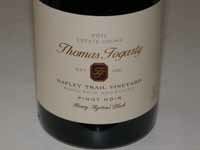 12.8% alc., pH 3.37, TA 0.62, 50 cases, $80. From a 6-acre vineyard planted in 1981. Henry Ayrton's Block was formerly known as the B Block. Martini clone planted in well-drained, very shallow fractured shale soil. 30% whole cluster, spontaneous fermentation. Aged 18 months in once filled 3-year-old air-dried, tight-grained French oak barrels. Bottled unfined and unfiltered. · Moderately dark reddish-purple color in the glass. The nose is reserved, offering delicate aromas of spiced berries. Delicious entry and exit featuring middleweight array of blue and black berries with a welcome accent of oak in the background. Not fully giving yet and definitely needs time in the cellar. The fruit really opened up and sang the following day from a previously opened and re-corked bottle and was the best wine of the three terrific wines from the Rapley Trail stable. Score: 96
A single wine sourced from a 1-acre vineyard in Sonoma Carneros. The vineyard is a group managed affair,the result of a partnership between Sonoma County public relations person Michael Coats, his wife Valerie, her parents Chuck and Jerry Hanson, and Valerie’s sister, Vicki Brown. Each of the partners share equally in the work of the vineyard which is organically farmed and overseen by viticulturist Phil Cotourri. The vineyard was planted in 2000 to a clone from a secret Russian River Valley source. The wine is crafted by B.R. Cohn’s Winery winemaker, Tom Montgomery. Limited Sonoma Valley and New York restaurant distribution. I have enjoyed many vintages of this wine. Visit the website at www.valeriesvineyard.com to acquire.
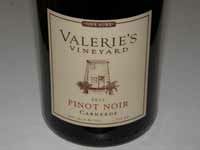 2011 Valerie’s Vineyard One Acre Carneros Pinot Noir 14.1% alc., 90 cases, $40. Ninth vintage. Aged 18 months in French oak barrels. · Moderately light deep red color in the glass. Rather exotically scented, offering aromas of strawberry, cherry, briar, white pepper, rose hips tea and seasoned oak. Mid weight core of tasteful strawberry, raspberry and cherry fruits with a bombastic cherry finish. Seamless, with soft, tame tannins and balancing acidity. Spend some time with this wine and you will discover plenty of spicy nuances come and go. Quite elegant and easy to drink now but will age. Score: 92
Brian Mast and Jennifer Waits found the romance of wine exploring California’s wine regions. Pinot Noir kept finding them. In 2005, they embarked on a journey to craft their own Pinot Noir at Crush Pad in San Francisco. They now offer several vineyard-designated Pinot Noirs from stellar sources and the wines have steadily improved in quality as the owners have acquired more winemaking experience. The 2010 wines below are in a big, bold, darkly fruited and well-structured vein. Visit the website to join the mailing list at www.waitsmast.com. There is some retail and restaurant distribution. Check out the winery's blog written by Jennifer at www.valleyfog.wordpress.com.
2012 Waits-Mast Mendocino County Rosé 14.5% alc., 24 cases, $20. Release April 2013. A saignée from three vineyards in Mendocino County (Deer meadow, Nash Mill and Mariah). Clones 115, 667, 777, Pommard and Swan. Native fermentation, aged 6 months in neutral French oak. · Moderately deep pink-orange color in the glass. Nicely scented with a perfume of fresh strawberries and summer watermelon. Plenty of body and flavor for a rosé featuring tastes that echo the nose and some fruit-driven finishing intensity. Enjoyable, but lacks crispness and delivers a sense of heat on the finish. Will stand up to more substantial summer fare. Score: 85
2010 Waits-Mast Oppenlander Vineyard Mendocino County Pinot Noir 14.4% alc., 50 cases, $44. Released April 2013. This vineyard is located outside the town of Comptche about eight and a half miles from the Pacific Ocean as the crow flies. The Shandel family are fifth generation owners of the property. The vineyard sees consistently cool temperatures and harvest is late. Careful sorting was required to remove sunburned grapes, a result of heat spikes in August and late September. Clone 114. 100% de-stemmed. Aged 17 months in 25% new French oak barrels. · Dark reddish-purple color in the glass. Aromas of earth-kissed dark berries with a complement of oak. Intensely fruity and I mean intense. Full-bodied flavors of black plum, black currant, boysenberry, black raspberry and brewed tea. A good cut of acidity lifts the fruit and the tannins are balanced. Admirable smoothness on the palate. A typical wine for this clone and vineyard. Score: 90
2010 Waits-Mast Wentzel Vineyard Anderson Valley Pinot Noir 14.6% alc., 50 cases, $45. Released September 2012. This 10-acre vineyard is located about 900 feet above sea level near Philo. Organically farmed within an expansive 300+ acre forested property. Roland and Barbara Wentzel are passionate caretakers of the vineyard. Clones 114, 115, 667 and 777 from a block that is less than an acre, all picked at the same time. Aged 17 months in 25% new French oak barrels. · Dark reddish-purple color in the glass. Shy aromas of black fruits and oak. A full-bodied, concentrated blast of blackberry and cassis flavors hit the mid palate and carry over to the modestly long finish. This is a big wine that is somewhat rugged and shoulders plenty of dry tannin. Should benefit from time in the cellar to allow the aromas to arrive and the tannins to integrate. An unusual amount of extraction for an Anderson Valley Pinot Noir, but appealing in its style. Score: 89
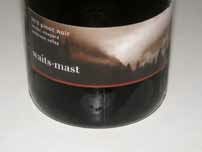 2010 Waits-Mast Londer Vineyard Anderson Valley Pinot Noir 13.8% alc., 100 cases, $40. Released May 2012. This vineyard is just west of Philo off Highway 128. The vineyard is surrounded by forests of conifer and benefits from warm days and foggy mornings. Soils are well-drained sandy loam over clay loam. Clones 115 and Swan. 100% de-stemmed. Aged 17 months in 30% new French oak barrels. · Moderately dark reddish-purple color in the glass. Aromas of warm berry tart, spice and forest floor. Relatively full-bodied, with plenty of sappy blackberry and black cherry flavor carrying over to an intense, fruit-driven finish. Very clean and classy fruit balanced with ripe tannins and appealing acidity. Score: 92
2010 Waits-Mast Archer Family Vineyard Russian River Valley Pinot Noir 14.0% alc., 50 cases, $36. Vineyard is situated off Starr Road in Windsor and planted to clones 777, 828 Pommard and Jackson 9. The site is adjacent Copain and about 2 miles from Amber Ridge Vineyard. First wine from this vineyard. 100% destemmed, aged 17 months in 25% new French oak barrels. · Moderately dark reddish-purple hue in the glass. The nose is clean and pleasing, with aromas of darker cherries, raspberries, fennel and smoky oak. Modest in weight with flavors of boysenberry, blueberry and raspberry backed by sinewy tannins. A little heat shows up on the finish. Atypical flavors for Russian River Valley. Score: 86
Sips of White Wines Tasted Recently
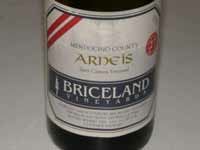 2012 Briceland Vineyards Spirit Canyon Vineyard Mendocino County Arneis 13.1% alc., $17. Arneis is an Italian grape known as the “white Nebbiolo.” Historically it was blended to soften the tannins of Barolo and but has become a new varietal on its own. Less than 100 acres planted in California. Vines planted and organically grown by Glen McCourty, the California Extension Agriculture Agent for Mendocino and Lake Counties. · Very pale yellow color and clear in the glass. Charming aromas of tropical fruits, banana and pear. An interesting array of flavors including Poire William, lemon, wax, and a touch of “minerality” and lime zest. Good creamy texture with vibrant acidity. A distinctive aromatic white wine that is perfect for the ABC (Anything But Chardonnay) crowd. Score: 90
2012 Briceland Vineyards Humboldt County Chardonnay 13.8% alc., $21. From Ronda’s Vineyard in Southern Humboldt County and Ishi Pishi Ranch near Orleans in northeastern Humboldt County. All stainless steel fermented. 100% malolactic fermentation. · Very light yellow color and clear in the glass. Slight spritz upon pouring. Aromas of lemon curd, apple, honey and buttered popcorn. Pleasant but delicate flavors of lemon and green apple with a good cut of acidity and a brisk finish featuring lemon-lime zest. Score: 85
2012 Briceland Vineyards Lolonis Vineyard Mendocino County Chardonnay 13.9% alc., $21. Produced from certified organic grapes. Stainless steel fermented with no malolactic fermentation. · Light straw color and clear in the glass. Lemon-scented nose with hints of grapefruit, apple butter and buttered brioche. Moderately intense flavors of lemongrass, lime and apple with the slightest note of dried herbs. Sound acids and good grip with a crisp finish make for very pleasurable drinking. Score: 90
2011 Byron Nielson Vineyard Santa Maria Valley Chardonnay 14.5% alc., pH 3.36, TA 0.59, 294 cases, $32. Released November 2012. Santa Barbara’s first commercial vineyard planted by Uriel Nielson in 1964. The Byron Estate is located on the site of Nielson’s original plantings. Clone 95 and Wente. 100% native yeast barrel fermented with 100% malolactic fermentation. Aged 12 months in 40% new French oak barrels. · Moderate golden yellow color and clear in the glass. Reserved aromatically with shy aromas of honey, vanilla and pastry cream. Full-flavored core of lemon drop, baked pear, honey, gingerbread and caramel. Very plush and creamy on the palate, lacking a little grip, but exhibiting accomplished use of oak as an adjunct. Score: 87
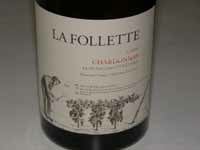 2011 La Follette Sangiacomo Vineyard Sonoma Coast Chardonnay 13.5% alc., pH 3.30, TA 0.66, 510 cases, $38. This vineyard is managed by thirdgeneration farmers, brothers Mike and Steve Sangiacomo with their brother-inlaw, Mike Pucci. Planted in 1998, and located in the Petaluma Gap, the Robert’s Road block is rooted in alluvial soils with tracks of gravel. The vines are farmed to La Follette’s specifications. The clone is Old Wente. Crafted in a reductive style. In 2011, ripening was difficult, so low other Sangiacomo blocks were used to build the trademark richness of this wine. Native primary and secondary fermentations. Aged 10 months sur lie with early bâttonage. · Light golden straw color and clear in the glass. Perfumed aromas of grapefruit pith, lemon, honey, yeasty brioche and popcorn. Delicious on entry and finish with an appealing array of flavors including lemon, green apple, baking spices, even clove, crème brûlée and toasty oak. Very silky and engaging with impeccable balance. Score: 92
2011 Gary Farrell Westside Farms Russian River Valley Chardonnay 14.3% alc., 621 cases, $38. Release September 2013. Ron and Pam Kaiser farm their 40-acre vineyard located four miles north of Gary Farrell winery. The vines were planted in 1989 to Clone 4 on deep, river-deposited sandy loam soils. · Light golden straw color and clear in the glass. Subdued aromas of citrus and buttered corn. Very understated and elegant, with delicate flavors of lemon, green apple and faint oak contributions. Picks up some intensity and interest over time in the glass and leaves a brisk, refreshing impression. Should improve with more bottle age. Score: 87
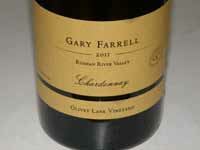 2011 Gary Farrell Olivet Lane Vineyard Russian River Valley Chardonnay 14.2% alc., pH 3.23, TA 0.74, 315 cases, $45. Release May 2013. Sourced from the Pellegrini Family’s Olivet Lane Vineyard that was originally planted in 1975 on the Santa Rosa Plain. This 65- acre vineyard was one of the first in the Russian River Valley planted to Pinot Noir and Chardonnay. The clone is Wente selection on AXR rootstock. The regular fog intrusion and well-drained clay loam soils are ideal for growing Chardonnay. Aged 7 months in 40% new French oak barrels. Inaugural release from this vineyard and what a winner! · Light golden straw color and clear in the glass. Aromas of lemon, honey, pineapple and buttery oak lead to a delicious fruit-charged wine with a bevy of citrus, lemongrass and caramel flavors lifted by an hi-tone cut of acidity. A seductive creaminess adds to the appeal and the tonal finish perks up the palate for more. Quintessential Russian River Valley Chardonnay with a historical pedigree. Score: 95
2011 Gary Farrell Rochioli Vineyard Russian River Valley Chardonnay 14.1% alc., pH 3.24, TA 0.72, 405 cases, $50. Released May 2013. Aged 7 months in 40% new French oak barrels. · Moderately light straw color and clear in the glass. Shy, but pleasing aromas of lemongrass, apple, white peach and lemon peel. Creamy and full on the mid palate, offering relatively intense flavors of lemon, grilled pineapple, vanilla and roasted nuts. Thoroughly enjoyable with plenty of verve despite its fruit load, finishing with a lovely lemon drop note. Score: 92
2012 Ten Acre Santa Lucia Highlands Chardonnay 14.1% alc., pH 3.45, TA 0.65, 190 cases, $28. This wine comes from Monte Negra Vineyard planted in 1999 to clone 4. Fermented in 40% stainless steel and 60% neutral French oak barrels. · Very light yellow pear color and clear in the glass. Aromas of Asian pear, banana, walnuts, pastry cream and vanilla wafer. Tasty core of lemon, pear and green apple fruits. A clean, restrained, bracing style of Chardonnay that drinks easy, finishing on a refreshing note of yellow fruits with a zip of acidity. Score: 89
2010 Thomas Fogarty Albutom Vineyard Estate Grown Santa Cruz Mountains Chardonnay 11.9% alc., pH 3.27, TA 0.73, <75 cases, $56. Released June 15, 2013. From a .25-acre plot, the smallest block of estate Chardonnay. Dry farmed on a very rocky site with loam over gravel and bedrock with fractured shale soils. This wine is typically recognized by its minerality and bright acidity. Aged 18 months in 100% new French oak barrels. · Light to medium golden yellow color and clear in the glass. Aromas of apples, peaches, buttered toast and petrichor. Clean, brisk and steely, characterized by mildly tart lemon and green apple flavors with very little oak evident. More hi-strung, bracing and reserved than the Langley Hill Chardonnay. Comparing this wine to the Langley Hill Vineyard Chardonnay is a great lesson in terroir. Score: 90
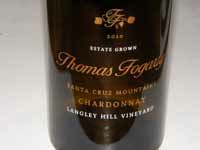 2010 Thomas Fogarty Langley Hill Vineyard Estate Grown Santa Cruz Mountains Chardonnay 12.9% alc., pH 3.40, TA 0.60, 95 cases, $56. The Langley Hill is the large plot of estate Chardonnay (5.25 acres). It occupies a steep hillside at 1925 feet elevation, and is a very cool site. Loam, sandstone, shale and marine deposits in the soil. Harvest was the latest in the nearly 30 year history of Thomas Fogarty, picking well into November. Whole-cluster pressed followed by a cool barrel fermentation. Aged 18 months in 100% new French oak barrels. · Light golden yellow and clear in the glass. I like oak with my Chardonnay and it adds just the right character in this wine. Aromas of grilled yellow peach, cashew butter, roasted almonds and ocean air. Delicious primary fruit flavors of peach, pear, and lemon, with secondary flavors of toasted brioche and honey, holding on with some persistence on the finish. Very clean and uplifting with palate cleansing acidity and a brisk, satisfying finish. One of the best Chardonnays I have tasted in recent memory. My wife also went ga-ga over this wine and some have tabbed her the “Queen of Chardonnay.” Score: 95
Pinot BriefsWorld of Pinot Noir Moves to Santa Barbara The World of Pinot Noir event (WOPN or “whoppin”) will be celebrated beginning in 2014 at the Bacara Resort & Spa in Santa Barbara, one of the finest hotels in the world. The fourteenth annual WOPN will take place February 28 and March 1, 2014. Over 100 wineries will participate, and the event will include a Gala Dinner, the popular Burgundy seminar and tasting, and a featured winery dinner in the Miro Restaurant Wine Cellar. Visitors to the event are encouraged to extend their visit to the Central Coast and explore the many wineries in the area. Additional tours, seminars and packages are being offered by local associations. World of Pinot Noir VIP ticket packages have already gone on sale at www.wopn.com/store.html and individual event tickets will be available in the early fall. Bacara Resort & Spa is offering lodging deals at www.wopn.com/travel/bacararates.html.
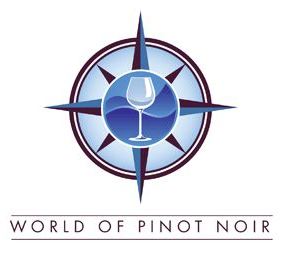 Proposed Eagle Peak Mendocino County AVA According to www.norcalwine.com (June 27, 2013), the Alcohol and Tobacco Tax and Trade opened three AVA actions for comment. One is the proposed Eagle Creek Mendocino County AVA and the other two proposals would decrease acreage in Mendocino and Redwood Valley AVAs. The three proposals are related because the suggested Eagle Peak Mendocino County AVA overlaps both Mendocino and Redwood Valley AVAs. The new Eagle Peak Mendocino County AVA would be about 26,260 acres and includes 16 vineyards comprising 120 acres total. The new alignment would place Masut Vineyards, a prominent Pinot Noir producer, solely within Eagle Peak Mendocino County. The name Eagle Peak is taken for a 2,699 foot summit in the region. Eagle Peak Mendocino County ranges from 1,100 to 3,320 feet with steeply sloping terrain with southern exposures. Adjacent Redwood Valley and Ukiah Valley are mostly lower and generally flat. Eagle Peak Mendocino County is significantly cooler than either Redwood Valley or Ukiah Valley with more wind. Soils are shallow and well-draining on Fransican Complex sandstone and shale.
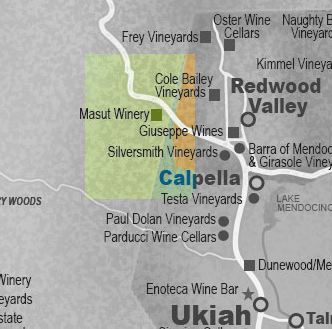 West of West Wine Festival Join me at this year’s West of West (WOW) event to be held at The Barlow in Sebastopol, August 2-4. Welcome dinners Friday night, August 2, seminars followed by a Grand Tasting on Saturday, August 3, and vintner interviews, vineyard tours and lunch followed by a second Grand Tasting on Sunday, August 4. Tickets are available at www.westsonomacoast.com.
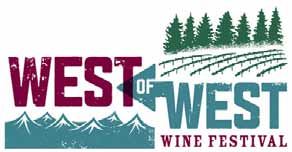 Sonoma County Wine Country Weekend Held August 30-September 1 (Labor Day Weekend) at various locations, the event includes winemaker dinners, cooking demonstrations, wine seminars and a large tasting at MacMurray Ranch in Healdsburg. For information, visit www.sonomawinecountryweekend.com. Wine and Fire Celebration Join me at the Wine and Fire Weekend Celebration, August 16-18, sponsored by the Sta. Rita Hills Winegrowers Alliance. The event kicks off with a Friday Night Barn Party at Sanford & Benedict Vineyard. Saturday morning seminars and lunch are followed by a Saturday evening Grand Tasting at La Purisima Mission. Tickets are on sale at www.staritahills.eventbrite.com. The 2013 Wineries and Vineyards of the Sta. Rita Hills AVA brochure is available at www.staritahills.com/touringmap.pdf.
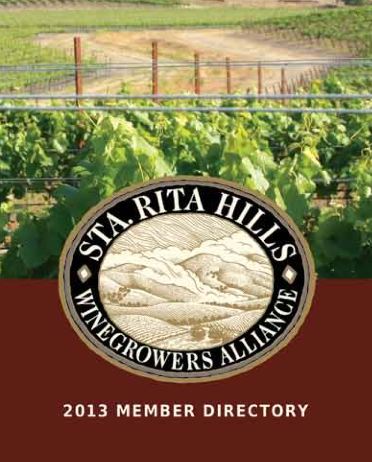 Keep the Promise Wine Tasting Benefit The Seventh Annual Keep the Promise event will be held in Newport Beach, CA, on Thursday, September 26. Attendees can drink exceptionally rare wines from all over the world and support one of Orange County’s art-based, low-income youth development organizations, The Wooden Floor. All fourteen featured red and white wines were generously collected and donated by Newport Beach residents Janice and John Marklay and all have received ratings of at least 94 points by the Wine Advocate and/or Wine Spectator. Last year’s even raised over $200,000 for The Wooden Floor. For more information, visit www.thewoodenfloor.org/events/. Thomas George Estates Dinner in the Cave A special dinner will be held July 27 at Thomas George Estates in the Russian River Valley, featuring Japanese cuisine from Los Angeles’ famed Katana chef Koji Matsuzaki. The 6-course dinner will include 2010 Starr Ridge Vineyard Sparkling Pinot Noir, 2010 Catie’s Corner Vineyard Viognier, 2010 Cresta Ridge Chardonnay 2010 Baker Ridge Vineyard Pinot Noir, 2010 Cresta Ridge Vineyard Pinot NOir, 2010 Starr Ridge Vineyard Pinot Noir, and 2010 Late Harvest Windsor Oaks Muscat Canelli, all Russian River Valley bottlings. Tickets are $140 per person and must be reserved by July 22 by calling 707-431-8031 or emailing nancy@thomasgeorgeestates.com.
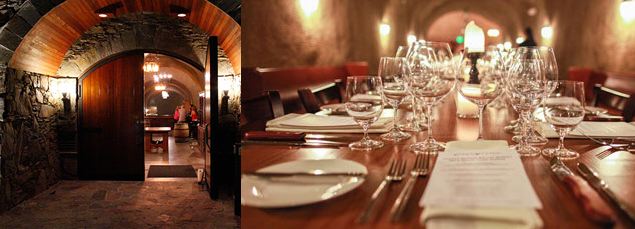 Feast Portland & The Bite of Oregon Feast Portland offers the opportunity to join a who’s who of the country’s best chefs at this four-day event held September 19-22 in one of America’s greatest foodie cities. Wine dinners on Thursday, September 19 feature Adelsheim Vineyard, Boedecker Cellars, Sokol Blosser, Willamette Valley Vineyards and King Estate Winery. Pinot lovers will want to attend the “Clash of the Pinots: Oregon vs the World,” tasting, and “Oregon Bounty Grand Tasting,” both on Friday September 20. Net proceeds go to worthy charities working to end hunger in Oregon and around the country. For information and tickets, visit www.feastportland.com. The Bite of Oregon, celebrating 30 years, is Oregon’s largest culinary event. Held August 9-11 at Portland’s Waterfront Park, the event includes cuisine from Oregon’s top chefs, drinks from Oregon’s finest wineries and craft breweries, celebrity chef demonstrations, live bands and entertainment, and children’s activities. Pinot Noir producers that are participating include Capitello Wines, Namaste Vineyards, Seufert Winery, and Willamette Valley Vineyards. For information and tickets visit www.BiteofOregon.com.
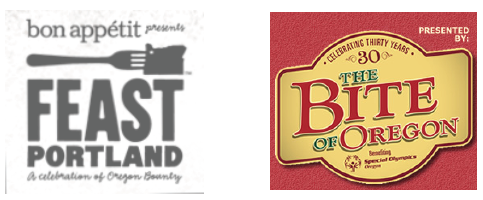 Elk Cove’s “Memphis Goes Hog Wild in Oregon” On August 17, Elk Cove Winery in Gaston will host noted Memphis chefs Andy Ticer/Mike Hudman of Andrew Michael’s/Hog & Hominy, Felicia Willett of Felicia Suzanne’s, Craig Blondis of Central BBQ and Ryan Trim of Sweet Grass/Next Door/Southward. Big bottle bar, Rosé smackdown and Bluegrass band. Tickets are $75 and available by calling 1-877-ELK-COVE. Carlton’s Walk in the Park Saturday, August 17 and Sunday, August 18 in Carlton, Oregon. A benefit for local charities that combines artists and musicians with local restaurants and wineries. Garden art, nursery plants and a classic car show add to the festivities, held at Wennerberg Park in Carlton. Enter the raffle for a chance to wine the 1st Prize of a 100-bottle Instant Wine Cellar featured Oregon wines. For tickets and raffle tickets, visit www.CarltonWalkinthePark.com. ¡Salud! Benefit Concert On Sunday, August 11, an evening concert and picnic will be held at Penner- Ash Wine Cellars . Award-winning chef Vitaly Paley will be paired with Penner-Ash wines. Guests will cozy up on a blanket in the lush oak grove to enjoy the acoustic concert of headlining singer-songwriter Lori McKenna with Portland native Stephanie Schneiderman opening. 100% of ticket sales benefit ¡Salud!. Tickets are $100 and may be purchased online at www.tualityhealth.ejoinme.org/benefitconcert. Fourth Friday Nights in Carlton Jean Driscoll of the Carlton Business Association told me of a program for locals that is being offered this summer. The businesses of Carlton, Oregon, will stay open late until 7pm on the fourth Friday of the month when they will provide special offerings and pricing on Willamette Valley food, wines and crafts. The remaining dates are July 26, August 23 and September 27. Movie ‘Somm’ A documentary about the extraordinary effort required to obtain a master sommelier certification. The film, which is currently playing in small theaters, follows four people who prepare to take the exam that very few people pass (less than 200 in the past 40 years). The documentary is written and directed by Jason Wise, whose friend, Brian McClintic, is one of those studying to take the exam. Their tortuous experience from three weeks before the exam through the competition is featured. Reviews have been generally very positive. Wines of Danger A cadre of professional winemakers who produce small batches of very personal wines. Some of the winemakers have day jobs working for established wine brands and some do this full time. Either way, they make wines that are anything but save. Their tagline is, “There are safe wines and there are wines of danger. We prefer the latter.” A media and trade tasting is scheduled for August 12 at the Press Club in San Francisco (passes available on the website). There are currently fifteen members, some of which have had wines reviewed in the PinotFile, including Coterie Cellars, Waxwing and Pelerin. For more information, visit www.winesofdanger.com.
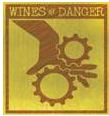 Pinot’s Palette This is a fast-growing national franchise where guests can paint and drink wine. Franchise partner studios are already open or scheduled to open in Arkansas, California, Colorado, Florida, Kentucky, Massachusetts, Oklahoma, and Texas. In March, Pinot’s Palette was the only paint and sip franchise included on Entrepreneur Magazines “Top New Franchises.” Guests can bring a bottle of their favorite wine (alcohol regulations vary by location) and local artists guide them step-by-step through a featured painting, allowing them to end the evening with their own masterpiece. Visit www.pinotspalate.com. Winery Passport App The Winery Passport App was recently launched in the Apple App Store. The App connects you to wineries, allows you to stamp your passport with each visit, then record detail of your visit including your favorite wines and ratings. The App also connects with Facebook and Twitter friends so you can share your journal companions. The Winery Passport App is available for the iPhone and iPod Touch and is free. For further details, visit www.WineryPassportApp.com. You can download the App in iTunes through this link: www.WineryPassportApp.com/download. Vine on Twitter Vine sounds like it is wine related, but it is an innovation in social media that many are not aware of. Mercedes Ann Bell recently sent me a copy of an article she wrote for a site dedicated to online education: www.onlineuniversities.com/blog/2013/04/vine-education/. Twitter’s newest service is a videosharing App called Vine. This mobile App allows users to create and share very short (not to exceed six seconds in length) video clips. It was launched as a free App on iPhone and iPod Touch in January 2013. Mercedes lists a number of applications of this tool in education and is certain to find its way into wine education and winery social media channels. The article is a sound resource for advice on how to use Vine. Fiddlestix National Toast July 28 FiddleFans are urged to raise a glass on 7/28 for the 2nd Annual Toast to the signature ‘728’ Pinot Noir from Fiddlestix Vineyard. There are two ways to participate. You can join the “land-based” party at the Fiddlestix Lompoc winery where there will be a tasting of ‘728’ verticals, BBQ beef sliders, ‘728’ deals. Or you can throw your own party with family and friends by purchasing a Party Pack containing ‘728’ Pinot Noir, hats or shirts, logo glasses, recipes and wine notes. ‘728’ swab also available. Visit www.fiddleheadcellars.com.
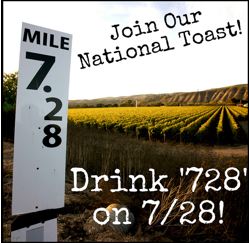 Pinot Envy Edward Finstein, also known as “The Wine Doctor,” and an internationally acclaimed wine expert, has published his first fiction novel, Pinot Envy. The book tells the story of an investigator, Woody Robins, who was hired by a wealthy Napa Valley grape grower to find his stolen, rare and priceless, large bottle of Burgundy that once belonged to the French emperor, Napoleon Bonaparte. Bancroft Press, 199 pages, hardcover ($17.86) or Kindle edition ($9.99).
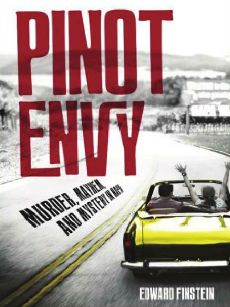 Pinot Noir from the World’s Oldest Winery Brotherhood was established in 1839 and is America’s oldest winery. In 1910, a French Huguenot emigrant, Jean Jaques, acquired land in the Hudson Valley of New York and began planting grapes. By 1837, he needed more land, so he bought another plot in Washingtonville, New York and planted another vineyard. By 1839, underground cellars were dug and Jaques vinified his first vintage. Those cellars, which are the oldest and largest in America, are still in use today at Brotherhood Winery. The Jaques family made wine at the Washintonville facility for almost 60 years, primarily to Jesse and Edward Emerson, two New York City wine merchants who were vintners themselves. When the Emerson family took control of the Washingtonville winery, they renamed it Brotherhood after an organization called The Brotherhood of New Life, an experiment in utopian communal living in the Hudson Valley. Louis Farrell and his family purchased the winery in 1921 and initiated the concept of wine tourism, hosting parties and events at the winery as well as introducing the Brotherhood brand to many American drinkers. Today, the winemakers are Cesar Baeza, who has made wine worldwide, and Bob Barrow, who works closely with Baeza. The winery’s 2010 Pinot Noir (vineyard source not specified) is available at $14.99. Visit www.brotherhoodwinery. com.
What’s Up with the Scores?Robert Parker, Jr.’s 100-point wine scoring system, which became popular in 1983 in his publication, The Wine Advocate, and adopted by the Wine Spectator in 1985, has been a homing beacon for consumers seeking to buy good wine and a marketing tool for producers touting their successes. Currently, every major United States-based wine critic, magazine, and internet wine review site uses the 100-point rating scale. This includes Steve Tanzer’s International Wine Cellar, the Wine Enthusiast, Wine & Spirits, Allen Meadows‘ Burghound newsletter, and The Pinot Report. In the international scene, the respected English wine publication, Decanter, with half its readership outside the UK, re-launched their Buying Guide in 2012 to include a 100-point scale for the first time, dropping their old five-star system. There are a number of misgivings about the 100-point system other than it is highly subjective, including the fact that there is no measurable difference in say, a rating of 90 versus 91. Also, scoring a wine may only matter to the person doing the scoring as we all have different tastes. The reality is that the wine drinking public has come to rely on scores in choosing wines of quality and have become somewhat dependent on others to tell them what they might or should like. Consumers often pay little attention to the description of the wine which requires the most effort from the reviewer, instead focusing directly on the wine’s score. A recent experience of mine confirms the current focus on scores that direct consumers’ wine purchasing decisions. My spouse and I were invited to a neighbor’s house for dinner recently. One of the hosts said she was serving a Tempranillo from Spain that she bought that day while shopping at Costco, and since it had received a score of 92, she thought it would be a good wine. When I asked her who had scored the wine, she had no clue. We know that women buy the most wine in this country and their decisions are often influenced by a posted score. She didn’t particularly like the wine, but I did, and therein lies the rub when it comes to scoring wine. That said, scores drive the marketplace and give the uninformed consumer some guidance in making purchasing choices. The PinotFile has always been unique in that numerical scoring has been avoided. The emphasis has been on short, relevant tasting descriptions intended to guide the reader to styles of Pinot Noir they might enjoy. Exceptional wines were indicated by a Pinot Geek Icon, Very Good wines were considered distinctive and well-crafted, Good wines were solid, and Decent wines were undistinguished, but very drinkable. The same system was used for Chardonnay with a Gold Geek Icon substituting for the Pinot Geek Icon. Beginning with this issue, I have decided to add the 100-point scoring system to my wine reviews. I have thought about making this transition for years, but only now feel I have enough experience to make my scoring judgments valid. Another consideration has been that wines that I have considered extraordinary and were awarded the Pinot Geek Icon did not receive the recognition they deserved. Wineries, distributors, retailers and others had no way to use the Pinot Geek Icon to signify the excellence of these wines. Finally, the scores will bring relevance to the PinotFile newsletter in the current scheme of critical and professional wine evaluation and education. My new scoring guidelines are as follows: Extraordinary 94-100 (I have yet to have a 99 or perfect 100 point North American Pinot Noir and do not believe the perfect Pinot Noir has been made), Outstanding 90-93, Very Good 86-89, Good 80-85, and Decent 75-79. I do not publish scores for wines that are unsatisfactory or for wines that score less than 75 points since I cannot recommend them. I will continue to use the Pinot Geek Icon or Golden Geek Icon for wines rated as Extraordinary, and the Pinot Noir Value Icon and Chardonnay Value Icon for wines that offer an exceptional price/quality ratio. Generally, this will be a wine priced at or under $35 that offers the drinker varietal correctness as well as appealing aromatics, flavors and enough complexity to signify a bargain at the wine’s retail price. These wines often make very good daily drinkers. Occasionally, both the Pinot Geek Icon and Pinot Value icon will be awarded to a Pinot Noir that represents both an extraordinary drinking experience and a very good value. |